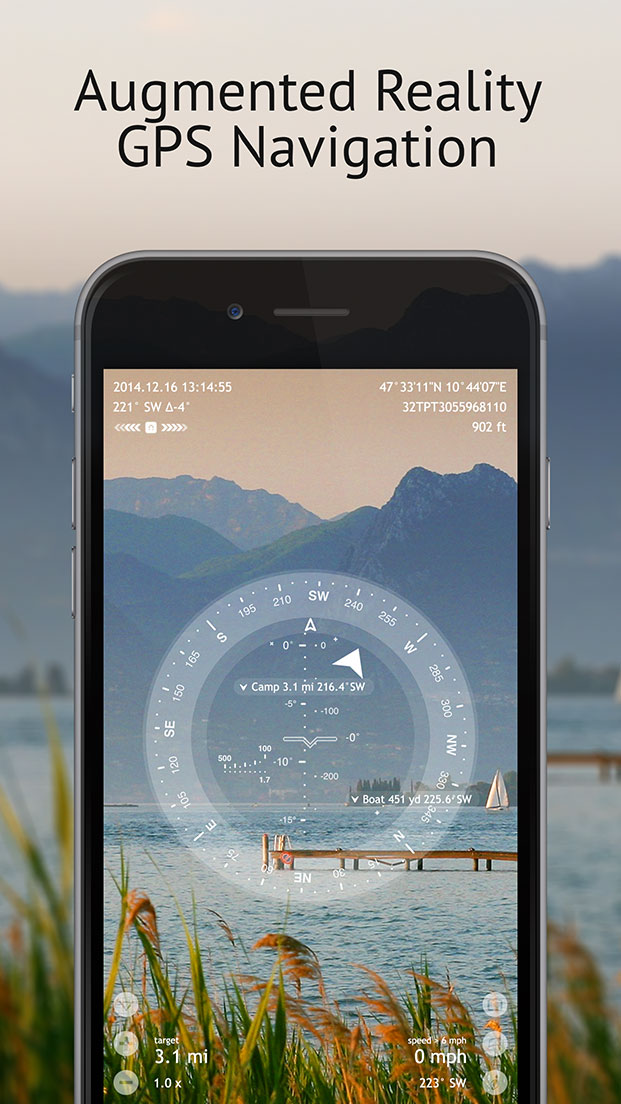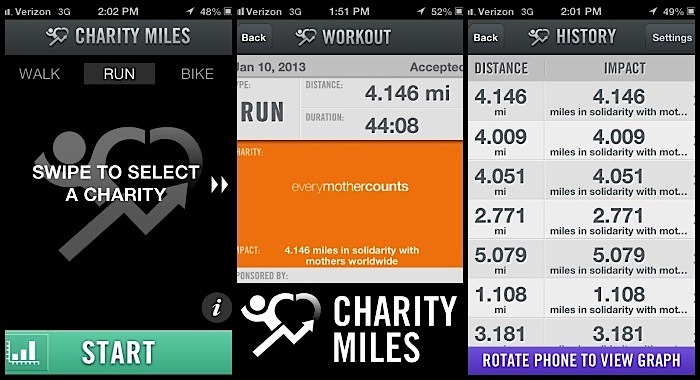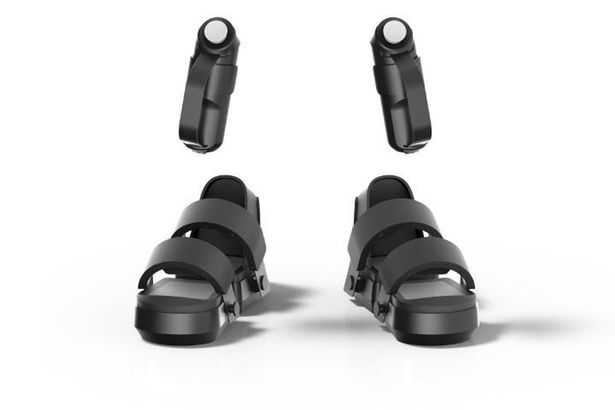Nvidia – Blurring the Lines Between Virtual Reality and Real Life
Blurring the lines between real life and virtual reality has never seem so close and possible. Nvidia combines its Virtual Reality Holodeck application with Self Driving Cars, in order for a human to be able to take over a vehicle remotely, in the event of a problem.
According to TechCrunch, the driver was sitting on the stage of the convention center wearing an HTC Vive and seated in a cockpit-like car with a steering wheel. Using Nvidia’s Holodeck software, a car was loaded. Then, a video feed appeared showing a Ford Fusion behind the convention center. The driver in VR had seemingly complete control over the vehicle and managed to drive it, live but slowly, around a private lot. He navigated around a van, drove a few hundred feet and parked the car. The car was empty the whole time.
Inside the simulation, users could grab the car’s steering wheel, or watch it explode into its component parts. According to VentureBeat, the Holodeck will be available more widely as a demo in September.
Moreover, according to enterprisetech.com, Nvidia revealed how it’s planning to use virtual reality technology to accelerate the testing of autonomous vehicles. The new offering, called Drive Constellation, could dramatically improve the capability to test certain driving conditions, such as snow or blinding light, that can be hard to get in the real world.
Nvidia will use Drive Constellation offering to scale up the testing of the algorithms that autonomous vehicles use to make decisions. The solution, which is expected to be available in the third quarter, will combine two main products.
The first component in Drive Constellation will be the company’s Nvidia Drive Sim software, which simulates the data emitted from sensors used in an autonomous vehicle (AV), including visual cameras, thermal cameras, radar, and LIDAR. The second component will be Nvidia Drive Pegasus, the GPU-powered computer that actually processes the AV’s sensor data in real time.
Together, the components will allow Nvidia customers, such as Google and Uber, to significantly ramp up the number of miles driven in cyberspace before putting the AV on the road for a real-world test.
Top 5 Video Editing Trends in 2017
1.Having a video strategy is a must
Every campaign and business must have a strategy behind them in order to succeed. The time of improvisation has passed, letting its place to creativity and smart thinking, with a strong business and strategic insight. Almost 73% of video marketers admit that videos help them getting the best ROI, but 29% also admit that the lack of an effective strategy is the main reason why they don’t see bigger returns.
When it comes to video editing, a well-planned video strategy is becoming especially important and will soon become commonplace. The audience is smart and demands the same from companies and brands and, at the same time, doesn’t settle for less anymore. Moreover, the targets are getting extremely knowledgeable and know how to differentiate between a randomly edited and thought out video.

2. Video Chapterization is totally necessary
The attention span of the target audience, whatever field you may be in, has drastically reduced. Faced with a wealth of information on social media and video sharing channels, very few people are willing to sit through an entire video. Video Chapterization is a boon for video editors and creators by allowing the users to skip through the video chapter-wise to get to the relevant content faster. YouTube already allows uploaders to add chapters to their videos and is an upcoming video editing trend which will see widespread adoption in the coming years.
3. Professional Video Editing Software Will Go Mobile
This trend has already caught on when it comes to high-quality photo editing software such as Adobe Photoshop, Adobe Lightroom, etc., making their smartphone debut 2 years back. In 2017, we can expect to see high-quality video editing software release versions of their mobile apps to facilitate ease-of-use and seamless mobility.
4. Live Video Editing Becomes the Big Thing
The rise of live video on Facebook, Twitter, YouTube, Instagram, was one of the latest video editing trends in 2016. In 2017, as the technology catches more place and establishes itself, live video editing should become a norm across all these platforms.
5. Edited Virtual Reality Videos, integrating with Social Media Platforms
2016 saw YouTube gain a string of competitors in the form of Instagram, Facebook, Twitter, etc. as all these platforms started making video a bigger part of their overall user experience. Video editors have now the opportunity to choose from a variety of channels found at their disposal and also publish on them. But what is more interested and suggested by the specialists is an upcoming trend which can help: VR videos integration onto these platforms.
Facebook is already developing Sorround360, a high-quality and cutting-edge VR camera which would facilitate the production, editing, and publishing for VR video content on different social media channels. “This black circular camera—with its 17 evenly spaced lenses—looks kinda like the flying droid that descends onto the ice planet at the beginning of The Empire Strikes Back (though it lacks those insect-like dangly legs). Drawing images from all 17 of those lenses, it produces 360-degree spherical video for viewing both inside virtual reality headsets like the Samsung Gear (stereoscopic 3D) and on ordinary smartphones, tablets, and PCs (monoscopic). Similar videos are already popping up in News Feeds on the Facebook social network,” wrote Wired.
Using WhatsApp for business – the new important trend?
WhatsApp has become one of the most popular messaging apps in the world, with 1 billion daily users. Besides being a phenomenon in the people’s private lives, the app is taking control in the work side of the story, businessmen and women using it more and more in their everyday business activities.
A reality that is seen also by the app’s owners that are getting ready to start capitalizing more on its success. According to Tech Crunch, WhatsApp is gearing up to finally monetize its messaging app by charging large enterprise businesses for tools to better communicate with customers. WhatsApp will also offer a free app to small-to-medium sized businesses, though it hasn’t outlined the specific functionality of the app. The enterprise solution will allow global companies “to provide customers with useful notifications like flight times, delivery confirmations, and other updates”.
Moreover, recently, WhatsApp began testing verified accounts for businesses. “Conversations with businesses are encrypted and they can be blocked. Interestingly, if a business isn’t already in your phone number contacts, its name will appear as whatever they register themselves as instead of their number. This could allow WhatsApp to create a business search engine with optional sponsored results, or let businesses cold-message people, possibly for a fee,” wrote Josh Constine for Tech Crunch. More on the subject one can read here.
As the interest towards the app’s use for business is constantly growing, we are offering you some tips on how to maximize the app’s features on the professional life as well.
- Look at its importance in Customer Communication
- Get permission from the owner to share his / her content. You can do that either by commenting on their post letting them know that you want to share their photo or video with your audience. Then you can ask if you can have their permission to repost it. You can also send the user a Direct Message asking the same thing. Once they give you response in writing, giving you permission to repost the picture, then you’d be allowed to repost the picture. If they don’t respond, don’t use it. Asking is not enough. You need actual consent.
According to ProfitBooks, following up on WhatsApp instead of direct calling on the phone calls will help you get a 40% higher response rate. “No one appreciates phone calls from unknown numbers, but we are more likely to respond to personal messages. When we start using WhatsApp for customer communication, we noticed better response and engagement. This also gives an opportunity to be little informal. For example, you have sent a quotation to your potential customer but haven’t heard from him, what do you do? You either call him or send a followup mail using formal language. Instead of doing this, if you just send a short message on WhatsApp asking about the status, you might get a quick response,”writes the website.
2. A great tool for Marketing, Promotion and Customer Support
WhatsApp could be a great tool for customer support simple because of its wider reach. Your customers would always prefer to send you a message over WhatsApp rather than calling a helpdesk number or talking to a robot.
Moreover, WhatsApp can prove to be a very strong marketing tool. It is a good one-to-one platform for direct communication, making it easy to send and receive any type of content (images, audio files, short video clips, etc), really fast, to users all over the world. Unlike SMS or Email, there are less restriction on the format and delivery chances are higher.
This doesn’t mean that you should spam your customers with WhatsApp messages. Ideally you should use WhatsApp to connect with existing loyal customers rather than trying to reach new users.
3. A place for using your creativity
Technology and digital are helping businesses become more creative, offering them the possibility to innovate and surprise their target on a regular basis. WhatsApp, like any fresh and hot app, makes sure it gives its users the chance to grow their business in a cost effective manner, all one has to do is be up to date with its technical features and try and see things from a different perspective. One can get inspired from here.
4. Great for Market Surveys
Whatsapp is a great interactive tool for getting real-time suggestions and feedback from your customers about your products and services, through brief and concise questions relating to the areas of your business or service you need information on.
5. Amazing for Internal Communications purposes
One of the greatest things about WhatApp is that is easy to use and understood by all types of target, almost everyone uses it. At the same time, as pointed out by vanguardngr.com, you don’t need to explicitly ask your employees or team members to check the app, because chances are they’re already hooked to it. “You can form WhatsApp group for different teams in your business, for example you can form a WhatsApp group for the Business Strategy team, another for the Sales and Development team etc. Your team can share ideas, instant messages, images, audio files, video clips and other media among themselves in a quick and fun way. You also don’t need to be too afraid of the information shared on the these groups getting out, because Whatsapp messages are protected with an end-to-end encryption that not only makes it one of the safest messaging apps in existence, but also adequately protects your data from leaks,” adds vanguardngr.com.
More pieces of information and ideas you can also read here.
Is it illegal or not to regram?
Copyright is always an issue than one posting on social media should be careful of and pay attention at. Due to the fact that Instagram doesn’t include the ability to regram directly within the app, many people have feared that this practice of sharing other people’s content is actually a violation of the Instagram terms of service (TOS).
Moreover, there was a statement published some time ago that was saying that in the Instagram’s terms of service sharing content other than your own was a violation of the platform’s terms. Therefore, regramming was a violation.
But, according to socialmediaexaminer.com, Instagram has updated their TOS to state that you’re responsible for any content you post on Instagram. Sections 7 and 8 speak directly to the types of content you’re responsible for. And one can read the most current version of Instagram’s terms here.
So what are the steps that somebody must take in order to make sure they are not breaking any laws or rules?
Still according to socialmediaexaminer.com, there are two types of consent: implied and explicit. Implied consent is when users post content with the expectation that it may be regrammed (when the company or the brand has a running campaign with a certain hashtag that wishes it will bring along the wished target and, at the same time, is looking to engage them and make them share the info and get other people involved as well). Explicit consent is when the original content creator gives you direct permission to repost their content on your Instagram account.
2. Get attribution to the original user. Don’t forget to credit the person or the brand you are getting your information from.
3. Use the Repost for the Instagram app. Available for both iphone and android devices, repost for Instagram makes it easy to #Repost your favorite photos and videos on Instagram while giving credit to the original Instagramer. The benefit of using this app is that it will add a watermark to the image with the original post creator’s Instagram username. This makes it clear that the content is regrammed and provides attribution to the original creator.
4. There are now also a variety of platforms and services designed for brands to ask users if they can use their content. According to Debbie Miller, on her article on agorapulse.com, one example is a Content Rights Solution designed by TINT who creates a variety of social display tools. “The solution allows you to discover content relating to your brand, request the proper permissions from the author of the image via social media, and track which images to which you have rights,” explained Miller.
More on how to protect yourself legally you can read here.
12 Mobile apps that will change the world
Anatomy 4D

The augmented reality app, available in AppStore and Google Play, makes it easier for users to interact with complex information related to the human body. With great visuals and completely interactive, Anatomy 4D uses augmented reality and other cutting edge technologies to create the perfect vehicle for 21st century education. The app is perfect for students, doctors, or anyone who wants to know more about the human body.
Vio
The new music app turns your voice into an instrument. Even if you can’t sing, Vio has pitch correction technology that allows anyone to create unique sounds. Pinch, drag, swirl and swipe to transform your voice and shape new sounds. Adjustable keys, scales, tempos and more allow you to tailor your presets and define your own sound. Low, medium and high quality audio formats make it the perfect tool for every situation: time-killing and studio recording alike.
Once that perfect melody has been dropped, turn on Vio’s Looping feature. A double-tap on the screen begins a loop of your recording, leaving you free to focus on shaping your sound with the visualizer.
Cycloramic is an iPhone app that can take a full 360-degree photo, hands-free. Its highest resolution available is 44 MP and it offers an easy share on social media.
Spyglass

Spyglass is an advanced compass and GPS navigation app for iPhone and iPad. Spyglass comes in handy as a car, bike, boat, aircraft, vehicle or walking compass and GPS navigation to drive, cycle, sail, fly or hike off the road, in the field or woods, in the sea and in the air. Spyglass is a powerful toolkit essential for every outdoors man. Augmented reality navigator and a compass for the off-road. Packed with many useful tools: a hi-tech viewfinder (HUD), milspec compass, gyrocompass, maps, tactical GPS, way point tracker, speedometer, altimeter, gyro horizon, sniper’s rangefinder, coordinate converter, sextant, inclinometer, angular calculator and zoom camera. Save, find, track and share your position, multiple way points, bearings, Sun, Moon and stars, all in real time.
SnapShop Showroom is an augmented reality app that lets anyone plan how they will decorate a room. The app maintains a huge catalog of furniture from popular stores like IKEA.
Dare To Donate
This web application encourages users to vote for their friends (or anyone) to do a particular dare in exchange for donations. “We built Dare to Donate to combat donation fatigue. People don’t especially like donating. So we wondered what would happen if donors got something out of it,” declared the creators of the up.
HTC Power to give
This app donates your spare computing power for environmental, medical and scientific research. By plugging in your Android phone and connecting it to Wi-Fi, the spare computing power will be used for numerous projects like cancer research, Alzheimer’s disease research and understanding climate change.
Charity Miles
The app tracks your movements and raises money for good causes at the same time. Whether you prefer to run, jog or cycle, whatever the movement, you could earn lots of money for registered charities such as Stand Up To Cancer, (RED), Habitat for Humanity and a lot more. Just use Charity Miles as your fitness tracker, and you could help raise a lot of money!

Prompt
Prompt is an app that wants to help those suffering with memory loss. The app offers a visual diary, reminders, and notes, with which users can add maps, photos and contact details of important people. The mission is to help those with living with dementia and other memory-related problems, by creating links between events and people, using stored photos to give context. With Prompt, users no longer rely on reminders stuck onto fridges or stuffed in pockets. Instead, it acts as a personalized helper you can to turn to if you forget a name, face, what you’re meant to be doing, or even where you’re going. Each typed interaction – or spoken interaction if you have an internet connection – pulls up the results the app believes are most useful.

Tree Planet 2
This app turns virtual trees into real ones. The aim of the app is to grow a virtual tree. The game will require its users to fertilize, water and defend it from loggers. While users are virtually growing a tree, a real life tree is also being planted and tended to. The Korean company behind Tree Planet 2 claims to have planted 500,000 real trees in 10 different countries.
FlyDelta
Using the airplane’s wi-fi, users can see the ground below as they fly high above, without looking out the window. This app, and it’s inevitable competition from rival airlines, will allow passengers to feel as though they are exploring the world as they travel above the clouds.
Today’s busy parents and those traveling abroad shouldn’t have to carry paper records to every appointment. Belmmunized helps parents manage a child’s immunization history directly from their phone. This provides proof of immunization to school administrators, helping both parents and schools keep students safe and healthy.
Crazy, full of imagination technology pieces of 2017
Virtual reality shoes

Developed by Japanese firm Cerevo, the Taclim VR shoes allow you to use your feet to interact with what you see in virtual reality. The shoes give haptic feedback and vibrations to the wearer to give them a sense of walking on the virtual surfaces they see in front of them. In enabling haptic feedback for the user’s hands and feet according to images and sounds in a VR space, users become more engrossed, resulting in increased immersion above and beyond what is currently experienced visually and aurally when in a VR world. Moreover, the 9-axis sensor built into the shoes and gloves functions as an input device to capture movement to reflect actions in the VR space.
Taclim is scheduled to be available for purchase in Autumn 2017 at a price between US$1,000 to 1,500.
Hypersuit
Another extension to a virtual reality headset, the Hypersuit is a wearable simulator from French firm THEORY that gives the wearer the impression they have wings or can fly like a superhero. Intended for entertainment and gaming purposes, users lie on a movable exoskeleton platform and use their arms to control the direction of “flight”, while a fan blows in their face to complete the illusion.
Moreover, it allows the user to experience completely unique sensations, including flying through the air and swimming in the deep sea. One can even have a go at being an astronaut, without the terrifying notion of actually being launched into space. The suit relies on arm movements which control the user’s journey. The exoskeleton requires the user to lie down on top of it, wearing a virtual reality headset. Then, the user’s real life movements control how their character moves on screen.
Hair-growth helmet
The iGrow hair growth system from Apira Science is a helmet that blasts your scalp with a combination of red lasers and LEDs, in an attempt to stimulate hair growth. The company claims that the lasers energize and stimulate activity within the hair growing cell walls, resulting in a return to the normal function of the hair follicles.

The result of a collaboration between hair care giant Kerastase, tech giant Withings and L’Oreal’s Research and Innovation Technology Incubator, the Hair Coach claims to be the world’s first smart hairbrush. It uses a range of sensors to spot hair damage and offer feedback to users on how to better protect their hair, including changes to brushing technique.
The Kérastase Hair Coach—with technology powered by Nokia-owned Withings—features a microphone (which listens to the sound of brushing to identify patterns); an accelerometer and a gyroscope (to analyze brushing patterns and count brush strokes); and sensors (to determine if the the brush is being used on dry or wet hair). Via connection with an app, the brush can tell a user how how often hair is brushed—and also warn consumers if they are brushing too hard. The brush vibrates to warn against over brushing.
TVs that seem to disappear
In the biggest trend to emerge, Sony, LG, and Samsung all moved the core components of their flagship TV sets to outside hardware. At Samsung, all of the ports and brains of its new models are housed in an outside box. Sony built the guts for its top TV into a subwoofer that doubles as a TV stand.
Moreover, quite impressive is the new W7 from LG is just 2.5mm thick and everything that actually powers the TV is jammed into a futuristic-looking Dolby Atmos soundbar.
LG also had a prototype OLED TV that is 40 percent translucent.
Honda’s self-balancing motorcycle
Honda showed off its new Riding Assistant technology that keeps your bike balanced when it’s moving at speeds less than three miles per hour. The tech will even work when the rider isn’t onboard, meaning you never have to worry about your bike falling over on its side ever again.
This is still a concept, so we might never get the tech in actual bikes, but it sure looks cool.
Sony’s crazy thin e-ink watch

Sony showed an amazing concept for an e-ink smartwatch. The concept can change design and color, making it possible for anyone to switch it up depending on what they are wearing or their mood. Moreover, the surprise comes also from the fact that the e-ink display is thinner than a credit card.
The FES Watch U is available in Japan already, from Sony’s First Flight crowdfunding site, as well as several fashion boutiques in Tokyo. The “premium black” model costs 60,000 yen ($544), while the regular steel finish sells for 46,000 yen ($417) with a black or white strap. Both variants are considerably more expensive than the 29,700 yen original, and it’s unlikely any of them will see an official release outside Japan.
Smart bed

The Sleep Number 360 smart bed is designed to keep you comfortable by sensing your movements and automatically adjusting your position to keep you sleeping blissfully. It works even when there are two people in the bed, can warm your feet to help you fall asleep faster, and even raise you head to stop snoring.
According to verge.com, the 360 has three layers that are integral to making it work. There’s the actual mechanics at the bottom of the bed that physically move you up and down, but there’s also the air chamber, which adjusts to your position to make you comfortable. On top of all that, there’s the cushion layer that makes the bed something you’d actually want to lay on.
Levitating speaker
LG’s PJ9 speaker works using powerful electromagnets housed inside the accompanying “Levitation Station,” which keep the speaker suspended for up to 10 hours at a time. When the battery begins to run low, the speaker automatically descends to the Levitation Station and begins to charge wirelessly with no intervention from the listener and no interruption in the music.
The device works works using powerful electromagnets housed inside the accompanying “Levitation Station,” which keep the speaker suspended for up to 10 hours at a time. Its levitation is achieved through the use of electromagnets, rather than witchcraft, powerful units that support an omni-directional speaker that LG says features Dual Passive Radiator technology for “flush mid-range tones and crisp highs.”










